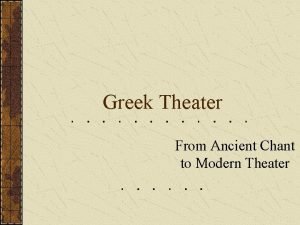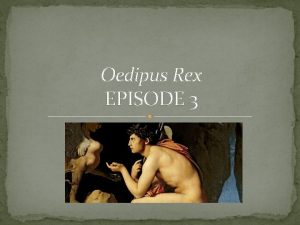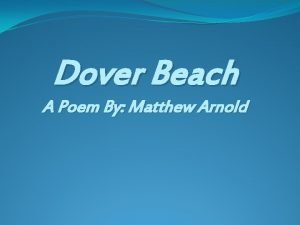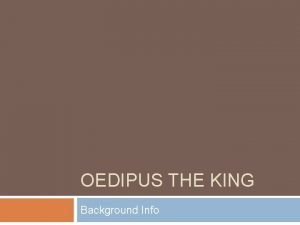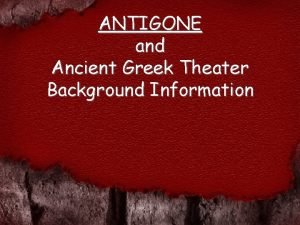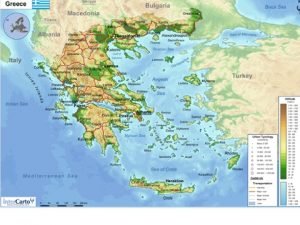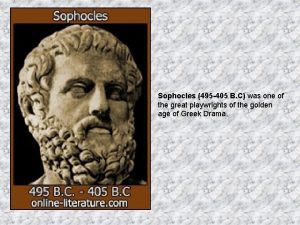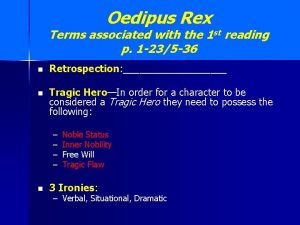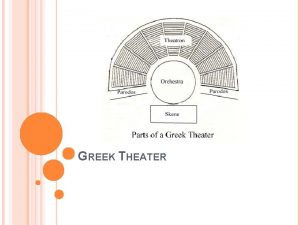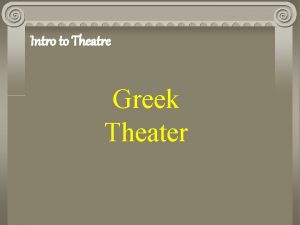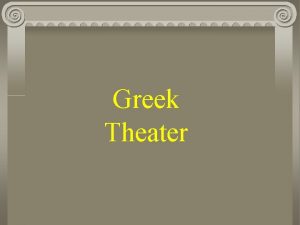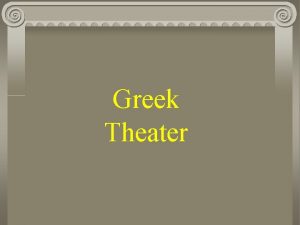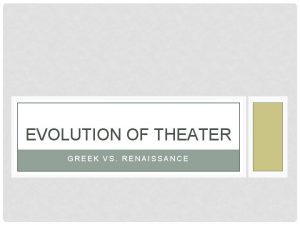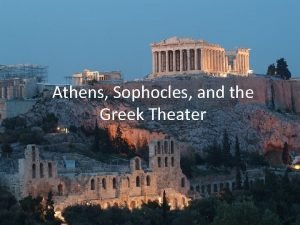Intro to Greek Theater and Sophocles Greek Theater











- Slides: 11

Intro to Greek Theater and Sophocles

Greek Theater • Greeks very competitive by nature • Had many festivals with competitions Dionysia: • Most famous festival-, it was a celebration of the Greek god, Dionysus the god of wine and drama • Occurred every spring • Was a four day festival—open to everyone, including prisoners • 3 dramatists showcased their plays, 4 plays each • 1 st, 2 nd, and 3 rd prize were determined by ten elected judges • A statue of Dionysus was placed in the audience during the festival, also room in the audience for his priests

Theater of Dionysus in Athens

Structure of the Plays and Audience Involvement Actors wore generic masks: old man, little girl, etc. Actors were male 3 actors in each play-elected professionals Plays placed importance on the individual heroes, but also their influence on the community Chorus: • Very big part of the play • Bridged the gap between actors and audience members • Represented the voice of the people and was comprised of Greek citizens • Performed on the dance floor, which was the focal point of theater Audience Members: • Were familiar with the content of the plays • Plays and the festival had religious importance • Even though the plays were about the past, message and “feel” reflected present • •

• Estimated 14 -15, 000 seats • Orchestra- “dancing space” chorus performed here • Theatron- viewing place • Skene- “tent” building behind the orchestra w/ backdrop and exit/entrance • Parados- “passageways” entrance/exit for actors and audience members

https: //www. youtube. com/watch? v=a. SRLK 7 Sogv. E

Sophocles • • Born ~ 496 BCE Antigone was performed 441 BC Acted in his own plays until he was too old Evidence shows he won 1 st prize 18 times Was involved in politics and military Father was a wealthy man Very well educated

Structure of Antigone Prologue: background for the play, Antigone and Ismene discuss burial of Polynices Parodos: initial song and dance performed by chorus 5 Episodes: similar to acts in a play 5 Choral odes: chorus chimes in, providing input about characters and circumstances Exodos: final words of wisdom from the chorus

Tragic Hero • Has a moral struggle and it ends disastrously • Is a superior person who is treated sympathetically (we like him/her anyway) • Is destined to go down fighting rather than submit—a moral victory, but physical defeat • Very human (not just good or bad) • Has a fall from good fortune

Hamartia (Tragic flaw) • Greeks’ version was hubris (excessive pride) • Can look like anger, jealousy, ambition, but it is always caused by a character thinking they are too superior

https: //www. youtube. com/watch? v=8 Ok. Mqp_a 188
